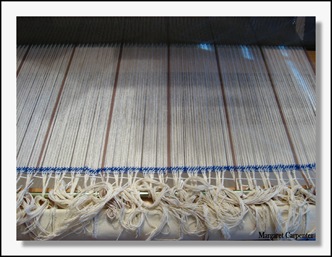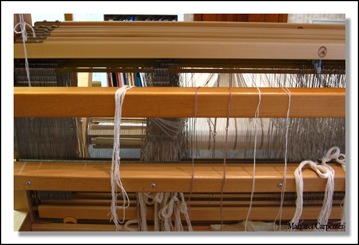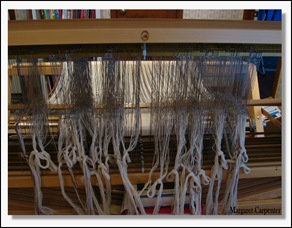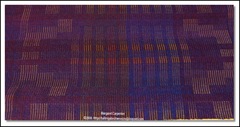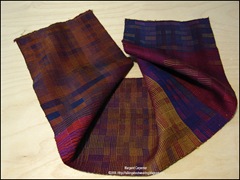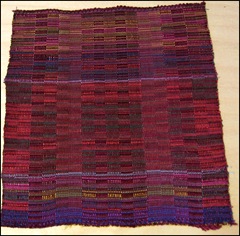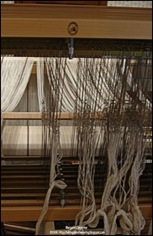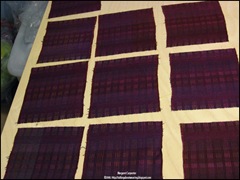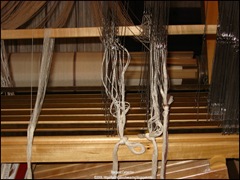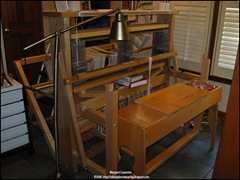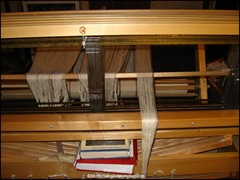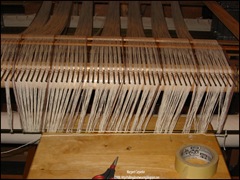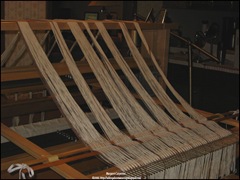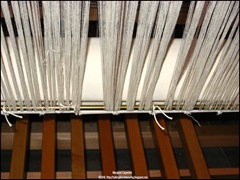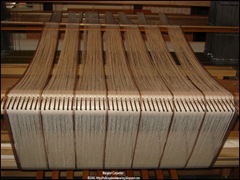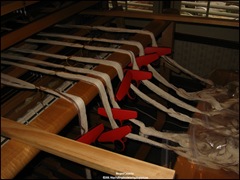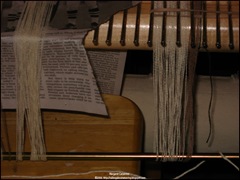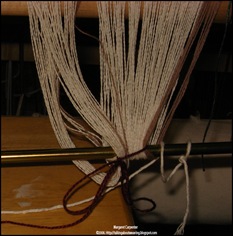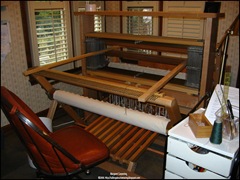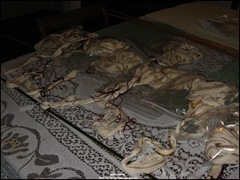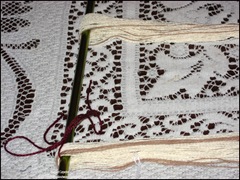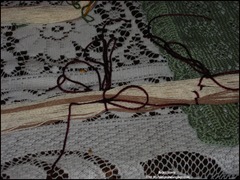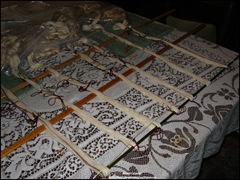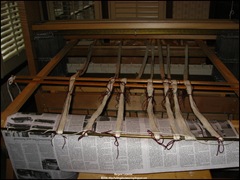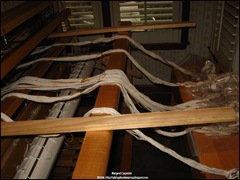Posted by Peg in South Carolina
The crackle samples have been sitting on a little table next to my computer. Yet, much as I sat at the computer, I didn’t see them. Having them there was painful. I knew I needed to deal with them. I did not want to. But I knew I had to.
By the end of Wednesday I had been weaving far far more than my body is used to. And it was beginning to tell me so. But the pain in my body caused a thought to come into me head. It was not a new thought. It had been sitting just under the surface for several days.
TOWELS AN EXCUSE?
Has the rather maniacal weaving of these towels at bottom been an attempt to keep from doing the work of examining, analyzing, organizing, thinking about all those crackle samples sitting next to me? Well, I rationalized, I just have to get those towels done for Christmas. Once those towels are woven, I can focus my attention on the crackle.
But I knew I was resisting. One of the “inspirational” sentences sitting in a frame on the top of my loom says: “Do whatever is required of you.” Dealing with those samples is required of me. But I resisted and resisted and resisted. And the pain of those samples next to me at the computer only grew.
FINDING A SIMPLE TASK AND MAKIMG A DATE
In the past when I have met up with this kind of resistance I have tried to find a very tiny task to do regarding the project I am resisting. I’m talking about a task that takes no longer than 5 minutes. Then making an appointment with myself to do it. This process always worked. But this time I can’t seem to find such a task. More resistance?
At last the first miracle. A very simple task came to mind. Print out the pages that I need. Actually, there is one that precedes that. Find the pages that I need! This was not all that hard! All I was requiring of myself was to think of the task. I was not requiring myself actually to do it. Set a time and date, yes. But not today.
Friday morning. 9:00 am, when I first sit down at the computer. Two days away. Not to worry.
THE DATE
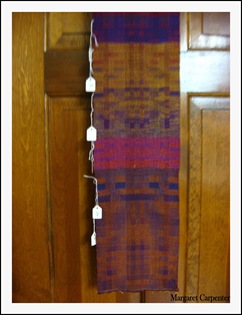 Friday came. When I finished breakfast and got to the computer I was so tempted to open up the internet and my email. But I didn’t. I went to the folders I needed for the crackle information. I found the material I needed. I printed it out.
Friday came. When I finished breakfast and got to the computer I was so tempted to open up the internet and my email. But I didn’t. I went to the folders I needed for the crackle information. I found the material I needed. I printed it out.
Then I analyzed to find which sampling went with which printed directions. I numbered the printouts and I attached tags with the numbers onto the samples.
I have hung the sample I want to work with on the door and put the printout nearby. You can see the sample to the left—a fuzzy picture as I couldn’t use my monopod. The rest I have organized into clear plastic folders. I have purchased a small ring binder for all of this…….. I am ready to start analyzing by figuring out what treadlings and blocks are associated with dominant warp visibility……… And that is where I will begin on Monday.
Related Posts:
Resistance
More on Resistance
"Resisting Doing the Work" was written by Margaret Carpenter for Talking about Weaving and was originally posted on November 29, 2008. © 2008 Margaret Carpenter aka Peg in South Carolina
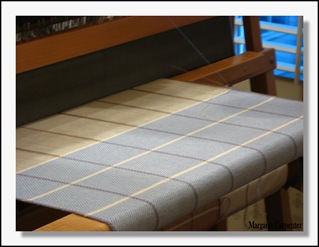
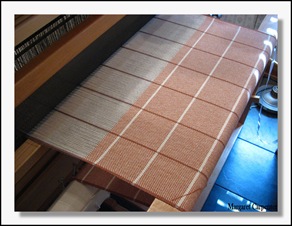 Weaving
Weaving